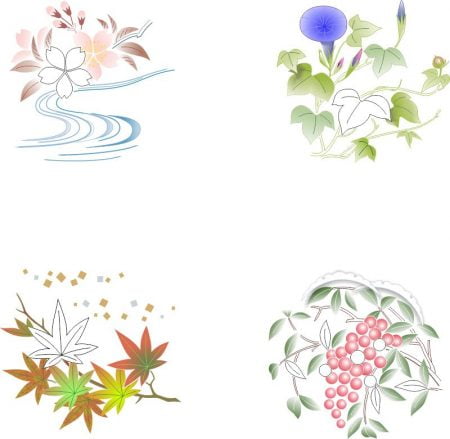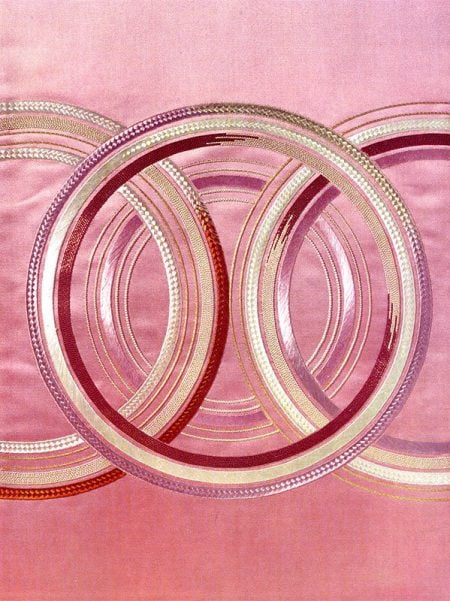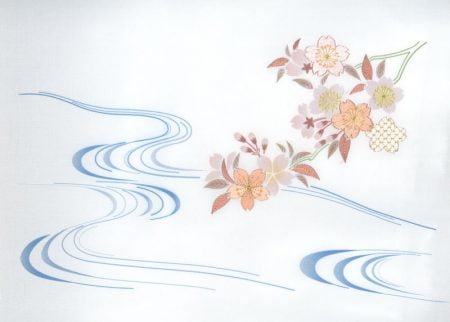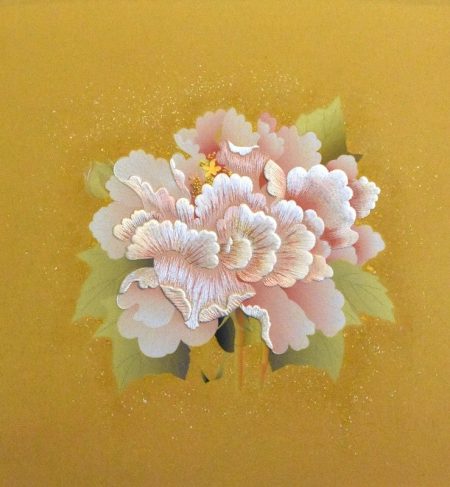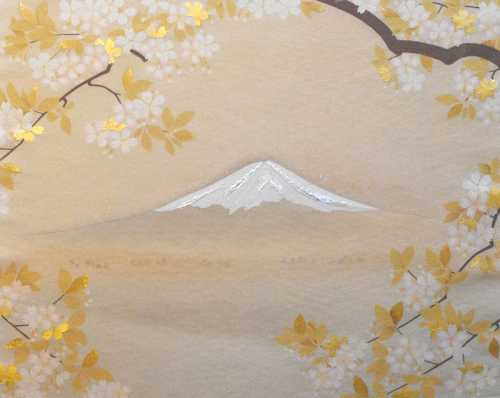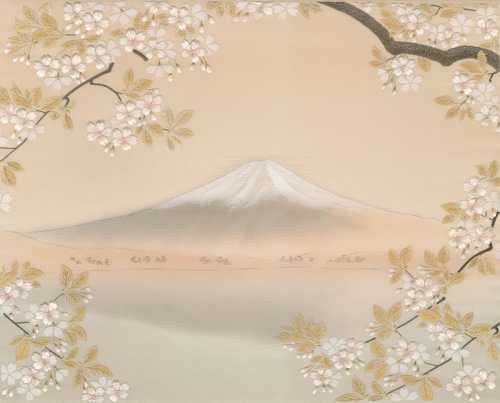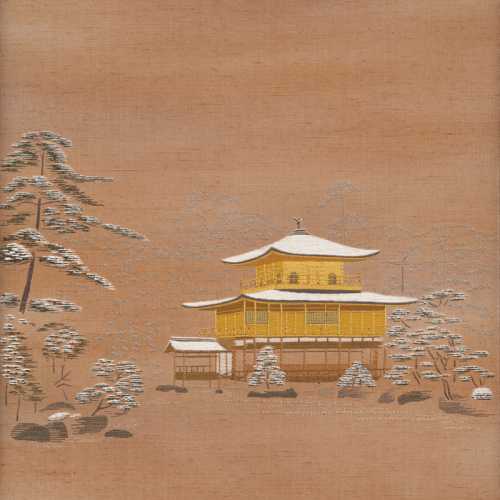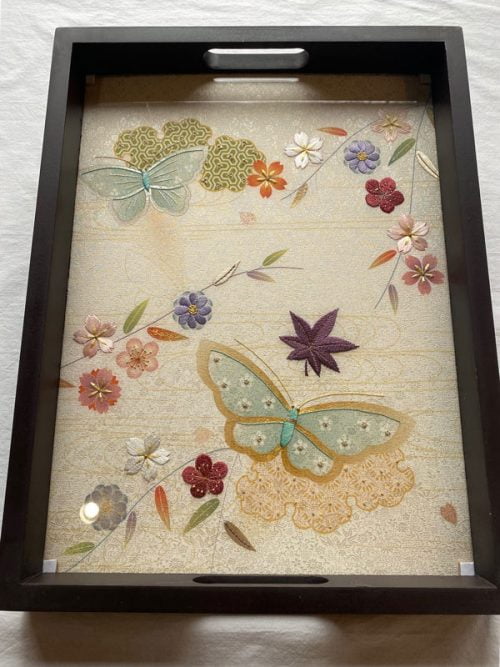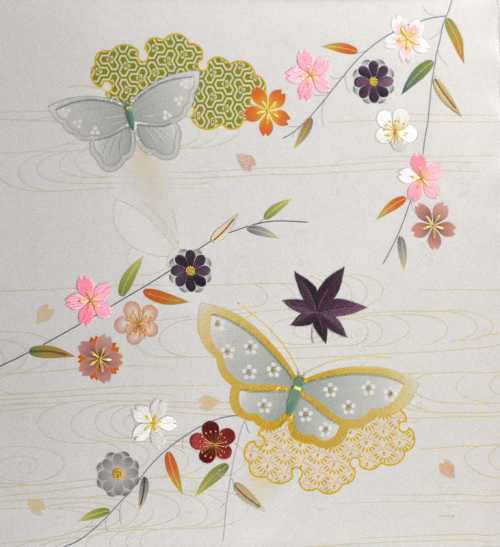-
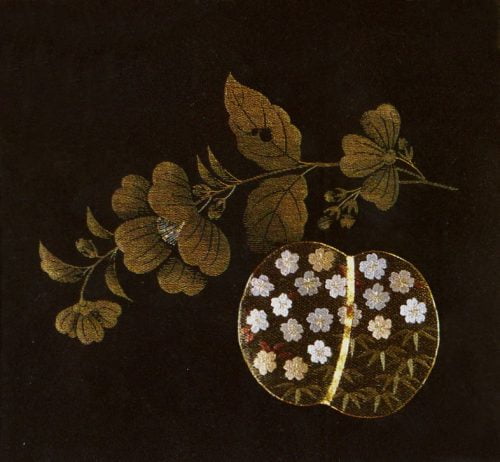 The new design is inspired by a black, formal kimono, named “Spring of Kemari”, which was created a long time ago by Master Iwao Saito. Kemari is a ball game that was popular in Japan during the Heian Period. The ball or footbag is considered an elegant motif, which is used for kimono and obi. You might find it interesting to see kemari among other formal motifs such as cypress fans, drums, noble carts, phoenixes, cranes, etc. We will reveal the history behind the kemari this fall. The fuzzy effect is applied to many varieties of designs, and we would like to explain its character, the basic techniques, as well as its creative aspects. We will also display kimono and obi examples that were stitched in the past. Recommended fabric type: Crepe Dyed-Black (as shown in picture) Recommended fabric length: 15" Included with fabric: Design paper, Color picture, Protective paper, Box chart, Lacing thread
The new design is inspired by a black, formal kimono, named “Spring of Kemari”, which was created a long time ago by Master Iwao Saito. Kemari is a ball game that was popular in Japan during the Heian Period. The ball or footbag is considered an elegant motif, which is used for kimono and obi. You might find it interesting to see kemari among other formal motifs such as cypress fans, drums, noble carts, phoenixes, cranes, etc. We will reveal the history behind the kemari this fall. The fuzzy effect is applied to many varieties of designs, and we would like to explain its character, the basic techniques, as well as its creative aspects. We will also display kimono and obi examples that were stitched in the past. Recommended fabric type: Crepe Dyed-Black (as shown in picture) Recommended fabric length: 15" Included with fabric: Design paper, Color picture, Protective paper, Box chart, Lacing thread -
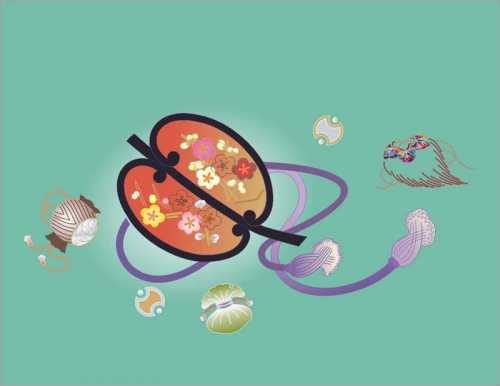
Gunbai, or “war fan” was a device used by samurai commanders to direct troops during battle maneuvers, and also a symbol of rank.
Nowadays, the gunbai is quite familiar to fans of Sumo wrestling as the referee’s device for conducting matches.
For this reason, the gunbai motif is used for boys’ kimono, demonstrating the wish that the wearer will be a leader, full of intelligence and determination.
Also, this motif is used for ladies’ kimono and obi to wish for guidance during the ordeals and turning points of life.
May the wearers be successful and achieve their aspirations.
